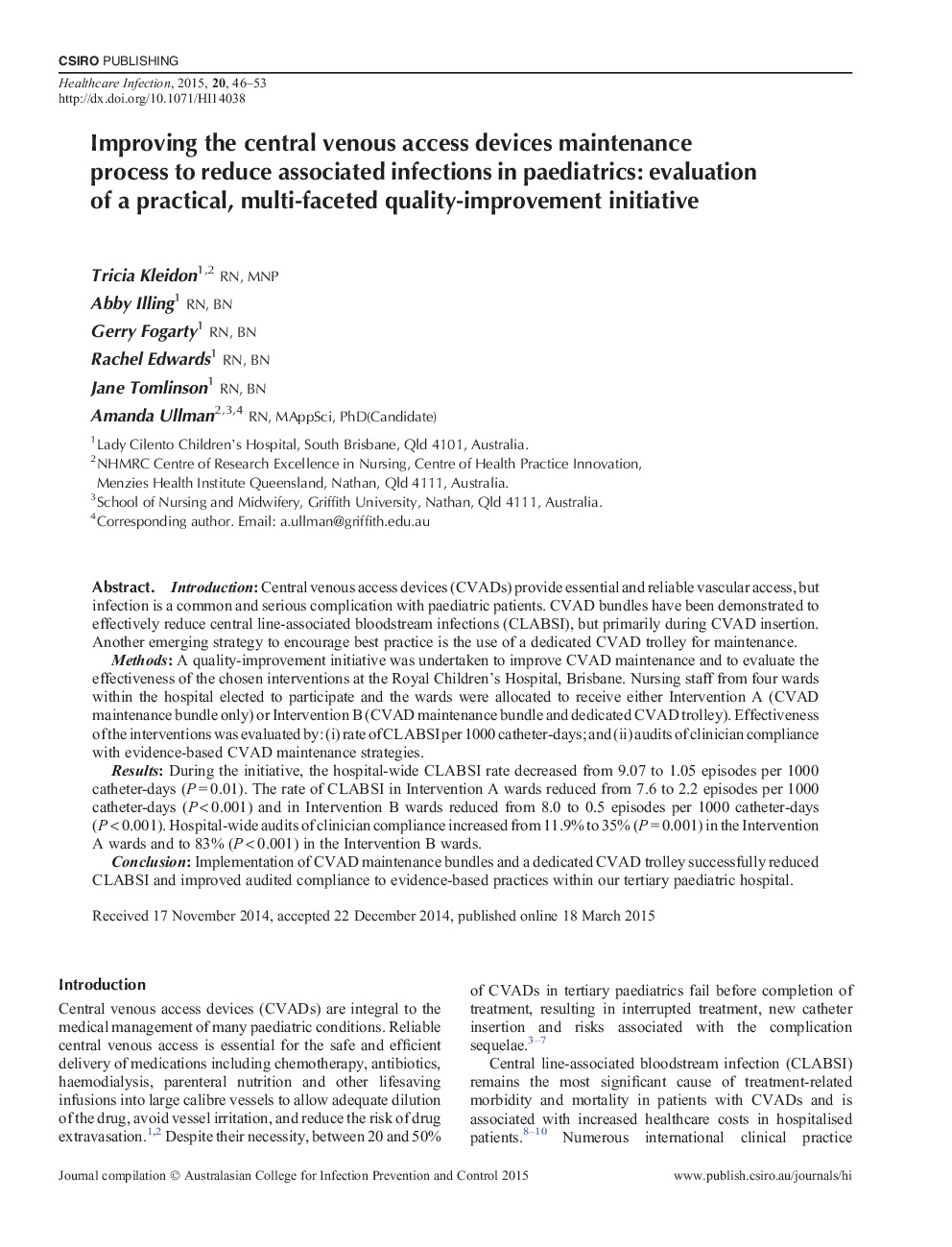| Article ID | Journal | Published Year | Pages | File Type |
|---|---|---|---|---|
| 2683315 | Healthcare infection | 2015 | 8 Pages |
IntroductionCentral venous access devices (CVADs) provide essential and reliable vascular access, but infection is a common and serious complication with paediatric patients. CVAD bundles have been demonstrated to effectively reduce central line-associated bloodstream infections (CLABSI), but primarily during CVAD insertion. Another emerging strategy to encourage best practice is the use of a dedicated CVAD trolley for maintenance.MethodsA quality-improvement initiative was undertaken to improve CVAD maintenance and to evaluate the effectiveness of the chosen interventions at the Royal Children's Hospital, Brisbane. Nursing staff from four wards within the hospital elected to participate and the wards were allocated to receive either Intervention A (CVAD maintenance bundle only) or Intervention B (CVAD maintenance bundle and dedicated CVAD trolley). Effectiveness of the interventions was evaluated by: (i) rate of CLABSI per 1000 catheter-days; and (ii) audits of clinician compliance with evidence-based CVAD maintenance strategies.ResultsDuring the initiative, the hospital-wide CLABSI rate decreased from 9.07 to 1.05 episodes per 1000 catheter-days (P = 0.01). The rate of CLABSI in Intervention A wards reduced from 7.6 to 2.2 episodes per 1000 catheter-days (P<0.001) and in Intervention B wards reduced from 8.0 to 0.5 episodes per 1000 catheter-days (P < 0.001). Hospital-wide audits of clinician compliance increased from 11.9% to 3 5% (P = 0.001) in the Intervention A wards and to 83% (P< 0.001) in the Intervention B wards.ConclusionImplementation of CVAD maintenance bundles and a dedicated CVAD trolley successfully reduced CLABSI and improved audited compliance to evidence-based practices within our tertiary paediatric hospital.
